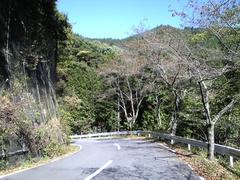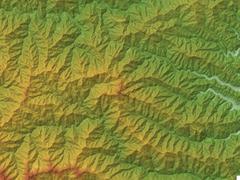
Hashidate Limestone Cave Visiting Hours, Tickets, and Travel Guide in Chichibu, Japan
Date: 04/07/2025
Introduction
Nestled in the scenic Chichibu region of Saitama Prefecture, Hashidate Limestone Cave is a destination that seamlessly blends geological marvel, spiritual heritage, and cultural richness. Stretching approximately 140 meters beneath a dramatic limestone cliff, the cave reveals intricate karst formations, a cool and stable microclimate, and remnants of ancient marine fossils. Its proximity to Hashidate-dō Temple, a pivotal site along the Chichibu 34 Kannon Pilgrimage, enhances its significance, making it a site of both natural and spiritual renewal. Whether you are a geology enthusiast, a pilgrim, or a curious traveler, Hashidate Limestone Cave provides a captivating experience set amidst the beauty and history of Chichibu.
This detailed guide brings together essential information on visiting hours, ticketing, access, safety, and nearby attractions, drawing on authoritative sources such as the Chichibu Omotenashi, Chichibu Geopark, and WAttention to help you plan a rewarding visit.
Table of Contents
- Overview and Significance
- Historical and Spiritual Background
- Visiting Hours, Tickets, and Accessibility
- Getting There: Transportation Tips
- What to See: Inside the Cave and Temple
- Guided Tours and Educational Programs
- Nearby Attractions and Seasonal Highlights
- Photography, Safety, and Conservation
- Sample Itineraries
- Practical Tips for Visitors
- Frequently Asked Questions (FAQ)
- Sources and Official Links
1. Overview and Significance
Hashidate Limestone Cave is a protected natural monument located at the base of Mt. Bukō, beneath a towering limestone cliff. The cave’s karst formations, stable 12–15°C temperature, and fossilized marine remnants make it a fascinating geological site. Culturally, its adjacency to Hashidate-dō Temple—famed as the 28th stop on the Chichibu 34 Kannon Pilgrimage—imbues the area with deep spiritual meaning. Pilgrims and travelers alike have long regarded the cave as a space for purification and symbolic rebirth, aligning with local religious traditions.
2. Historical and Spiritual Background
Geological and Spiritual Foundations
The cave’s origins are rooted in the slow dissolution of limestone by groundwater over millions of years, resulting in spectacular speleothems like stalactites and stalagmites. In ancient Japan, caves were seen as sacred sites linked to kami (deities) and spiritual transformation. The symbolic act of passing through the cave has been interpreted as a metaphor for rebirth and purification, reflecting beliefs prevalent throughout East Asia (Chichibu Omotenashi).
Edo Period Pilgrimage and Temple Construction
Hashidate-dō Temple was established in the mid-Edo period as part of the Chichibu 34 Kannon Pilgrimage—one of Japan’s three great Kannon routes. Unique among pilgrimage temples, Hashidate-dō venerates Batō Kannon, the Horse-headed Bodhisattva, guardian of horses and travelers. The temple attracts visitors seeking protection, safe travels, and spiritual renewal (Chichibu Omotenashi).
3. Visiting Hours, Tickets, and Accessibility
Visiting Hours
-
Hashidate Limestone Cave:
Open daily from 9:00 AM to 4:30 PM (last entry at 4:00 PM). Hours may vary seasonally or due to weather; check official sources before your visit. -
Hashidate-dō Temple:
The temple is unattended from the second Monday of December through the end of February, but temple stamps (goshuin) are available at nearby Daien-ji Temple during this period (Chichibu Omotenashi).
Tickets
- Admission Fee:
Adults: ¥200–¥400
Children: ¥100–¥200
Tickets are purchased at the cave entrance (cash only). Group discounts may be available.
Accessibility
- The cave’s narrow, twisting passages and vertical layout are not suitable for wheelchairs or visitors with significant mobility challenges.
- Uneven, occasionally slippery paths require sturdy, non-slip footwear.
- Lighting is minimal; bring a small flashlight for enhanced viewing.
- Children should be closely supervised.
4. Getting There: Transportation Tips
- From Tokyo:
Take the Seibu Ikebukuro Line Limited Express to Seibu-Chichibu Station (about 78 minutes). - From Chichibu Station:
Local buses or taxis provide a 15–20 minute ride to the cave area. - By Car:
Parking is available near the cave, though spaces may be limited during busy seasons (WAttention, Chichibu Geopark).
5. What to See: Inside the Cave and Temple
Geological Highlights
- Speleothems:
Stalactites, stalagmites, flowstones, and draperies formed over centuries. - Fossil Remnants:
Visible marine fossils embedded in limestone walls. - Mineral Veins:
Striking quartz and manganese oxide deposits provide colorful contrasts.
Unique Features
- Vertical Elevation:
The cave has a 30-meter elevation difference, creating dramatic internal vistas. - Stable Microclimate:
Year-round temperatures between 12–15°C offer a cool retreat in summer.
Hashidate-dō Temple
- Batō Kannon:
A rare statue of the Horse-headed Kannon, protector of horses and travelers. - Pilgrimage Site:
The temple’s setting beneath the cliff provides a tranquil spiritual atmosphere (Chichibu Geopark).
6. Guided Tours and Educational Programs
- Guided Tours:
Available by reservation through the Chichibu Geopark Promotion Council; guides provide insights into geology and local history. - Educational Programs:
School and group programs focus on karst geology and conservation.
7. Nearby Attractions and Seasonal Highlights
- Urayama Dam and Sakura Lake:
Cherry blossoms in spring and lakeside trails (Japan Water Agency). - Hitsujiyama Park:
Famous for its moss phlox display in April–May (Japanrar). - Mount Bukō:
Hiking trails and geological exhibits. - Chichibu Shrine:
Historic Shinto shrine known for ornate carvings and the Chichibu Night Festival (Japanrar). - Mitsumine Shrine:
Spiritual “power spot” and hiking destination. - Chichibu Muse Park:
Gardens, playgrounds, and observation decks. - Misotsuchi Icicles:
Winter natural ice formations, illuminated at night. - Chichibu Fruit Farm:
Seasonal fruit picking and family-friendly activities.
8. Photography, Safety, and Conservation
- Photography:
Flash photography is restricted inside the cave. Use a tripod and low-light camera settings.
The surrounding cliffs and temple are excellent for photos. - Safety:
Wear sturdy shoes; gloves and kneepads can increase comfort.
Pay attention to signage and handrails; bring a flashlight. - Conservation:
Stay on marked paths, avoid touching formations, and dispose of litter properly to help preserve the cave’s fragile ecosystem.
9. Sample Itineraries
Half-Day Course
- Arrive at Kagemori Station.
- Explore Hashidate-dō Temple and enjoy a local snack.
- Descend to the cave and spend 30–45 minutes exploring.
- Visit Urayama Dam for lakeside views.
Full-Day Pilgrimage
- Begin at En’yu-ji Temple.
- Hike the pilgrimage route via Daien-ji to Hashidate-dō Temple.
- Visit the cave, then continue to Chosen-in Temple and Morokami Bridge.
Two-Day Chichibu Adventure
- Day 1: Chichibu Shrine, Hitsujiyama Park, Hashidate-dō Temple, and the cave.
- Day 2: Mitsumine Shrine, Chichibu Muse Park, seasonal attractions, and onsen (Japanrar, Trip.com).
10. Practical Tips for Visitors
- Dress for the terrain: sturdy, non-slip shoes and light jacket.
- Carry cash (card payments are rarely accepted).
- Consider translation apps for Japanese-only signage.
- Check weather before visiting; the cave may close for heavy rain or snow.
- Support local businesses by dining or shopping nearby.
11. Frequently Asked Questions (FAQ)
Q: What are the current visiting hours?
A: Generally, 9:00 AM–4:30 PM. Confirm hours before your visit.
Q: How much are tickets?
A: Adults ¥200–¥400; children ¥100–¥200. Pay at the entrance, cash only.
Q: Is the cave accessible for wheelchairs or strollers?
A: No, due to narrow, vertical passages.
Q: When is the best time to visit?
A: Spring and autumn for scenery; summer for cool cave temperatures; winter for nearby icicle formations.
Q: Are pets allowed?
A: Pets are not permitted inside the cave.
Q: Are guided tours available?
A: Yes, arrange in advance through the Chichibu Geopark Promotion Council.
12. Sources and Official Links
Conclusion
Hashidate Limestone Cave is a singular destination where geological wonder meets centuries-old spiritual tradition. With accessible visiting hours, modest ticket prices, and a wealth of nearby attractions, it offers an enriching outing for anyone visiting the Chichibu region. Whether you explore as part of the Chichibu 34 Kannon Pilgrimage, as a family adventure, or as a solo traveler, Hashidate’s combination of natural splendor and cultural depth will leave a lasting impression.
For the latest updates, itineraries, and travel tips, check the official tourism websites, download the Audiala app, and follow our social channels. Embark on your Chichibu journey today!


